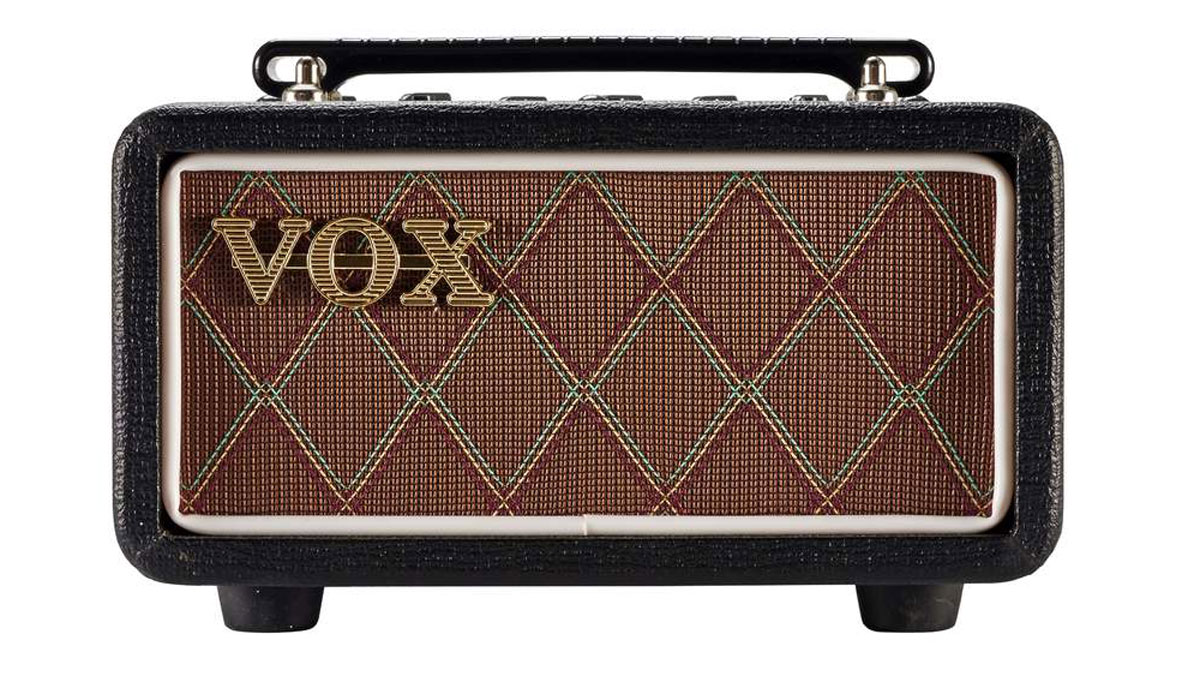MusicRadar Verdict
The Mini Superbeetle is a great recording tool as well as being ideal for home practice.
Pros
- +
Compact, good-looking and great tone you’d expect from this British institution.
Cons
- -
Over-bright mains LED, and no strain relief for power cable.
MusicRadar's got your back
This year is Vox’s 60th birthday, a rare event for any manufacturer and one that underlines Vox’s legendary status in the electric guitar universe.
As part of the celebrations, we’ve already been treated to a bevy of stunning new products this year, and here we’re looking at a tempting amp that combines cutting-edge technology with vintage style and tone in typical Vox fashion: the Mini Superbeetle 25 stack.
The Mini Superbeetle takes its inspiration from the 1960s’ USA-made Thomas Organ stacks and the British-made AC-100, with a scaled-down Nutube- powered head sat on top of a simplified non-pivoting chrome frame that supports a 1x10-inch Celestion-powered speaker cabinet. As with the MV50 heads we looked at around a year ago, the Mini Superbeetle may look like a toy, but it’s more than capable of holding its own with many full-sized amps, producing 25 watts into its dedicated cabinet, and up to 50 watts into a 4 ohm load. The amp is dressed in full-on traditional Vox livery, with black basketweave vinyl, brown diamond grill cloth and suitably proportioned gold logo badges, including an authentic vertical trapezoid badge for the Mini Superbeetle’s speaker cabinet. Grey-black control panels and chicken-head knobs on the outside of the chassis complete the vintage vibe. However, underneath the vintage looks the electronics are thoroughly modern.
The Mini Superbeetle has a pair of small PCBs for preamp and power stage, with the Nutube sat on a separate daughter board, making it easy to access in the unlikely event it needs replacing. The Nutube 6P1 is an innovative replacement for the conventional 12AX7 preamp valve, developed by Vox’s parent company Korg in association with VFD specialists Noritake Itron.
It uses VFD (Vacuum Fluorescent Display) technology, normally used in displays that tell you how fast your microwave curry is cooking. VFDs are interesting because they work almost identically to valves; they have a cathode, anode and a control grid to switch display sectors on and off. Homebrew enthusiasts have tinkered with VFDs for audio before, however, the Nutube 6P1 is designed for audio and effectively replicates the 12AX7 twin triode’s characteristics. The benefits are a much smaller package that looks like a glass integrated circuit, with tiny power consumption and little or no heat, resulting in a much-increased life - Korg quotes in the region of 10,000 hours.
As for controls we get knobs for gain, volume, bass, treble, a level control for the built-in digital reverb and a speed control for the Nutube-powered tremolo. There’s also a small standby switch, linked to a ferociously bright blue ‘on’ LED that’s powerful enough to make reading the panel lettering almost impossible.
On the rear panel you’ll find a socket for the external laptop-style 19-volt DC power supply, a pair of speaker jacks with an impedance switch and speaker-emulated headphones recording output. A master EQ switch changes the overall response between ‘deep’ and ‘flat’ modes, to suit the matching cabinet or larger enclosures, and there’s a defeat switch for the Euro-friendly auto power off mode, which turns off the power if no audio is sensed after a pre-set delay.
Want all the hottest music and gear news, reviews, deals, features and more, direct to your inbox? Sign up here.
Sounds
We auditioned the amp with a variety of guitars, including a Gibson Custom Shop ’63 ES-335, a PAF-loaded Les Paul and our Duncan Alnico Pro-loaded Strat.
The Mini Superbeetle might be quite different to the recently-reviewed AC30S1 internally but it sounds surprisingly similar, with slightly less bottom-end, yet still delivering a satisfying crunch, together with volume levels out of all proportion to its size. The volume comes from the Mini’s special Class D output stage, while the clever Nutube 6P1 provides the elusive feel and dynamics of a real valve, because it is one. The Nutube is also used for the Mini Superbeetle’s sweet-sounding tremolo effect, which adds considerably to the stack’s vintage vibe.
A single 10-inch loudspeaker taking 25 watts is more than enough for home use, while connecting the Superbeetle to a pair of 8 ohm cabinets will allow the amp to deliver its full 50-watt output. The EQ switch on the rear panel is handy when using the head with other cabinets, taming the boosted bass response for a tight and very contemporary tone.
It’s great fun to use, especially when you watch other people’s response to hearing it for the first time: any expectations that it’s a toy are quickly dispelled. The Mini is also a class act going into a recording desk, with very low noise from its speaker-emulated headphones output and the same quality digital reverb as the AC30S1, saving you one aux send or the processing power of a good reverb plugin.
Vox was originally built on innovation and over the last 25 years that pioneering spirit has continued to flourish under Korg’s ownership, allowing the brand to achieve its true potential as one of the world’s top musical instrument brands.
This amp is the perfect examples of that. The Mini Superbeetle 25 is a great recording tool as well as being ideal for home practice, while its cool vintage looks make it a unique conversation piece for any man cave. The blue ‘on’ LED needs to be toned down somewhat, and it would be nice if there was a strain relief hook for the DC power lead, but this is really all we can whinge about.
